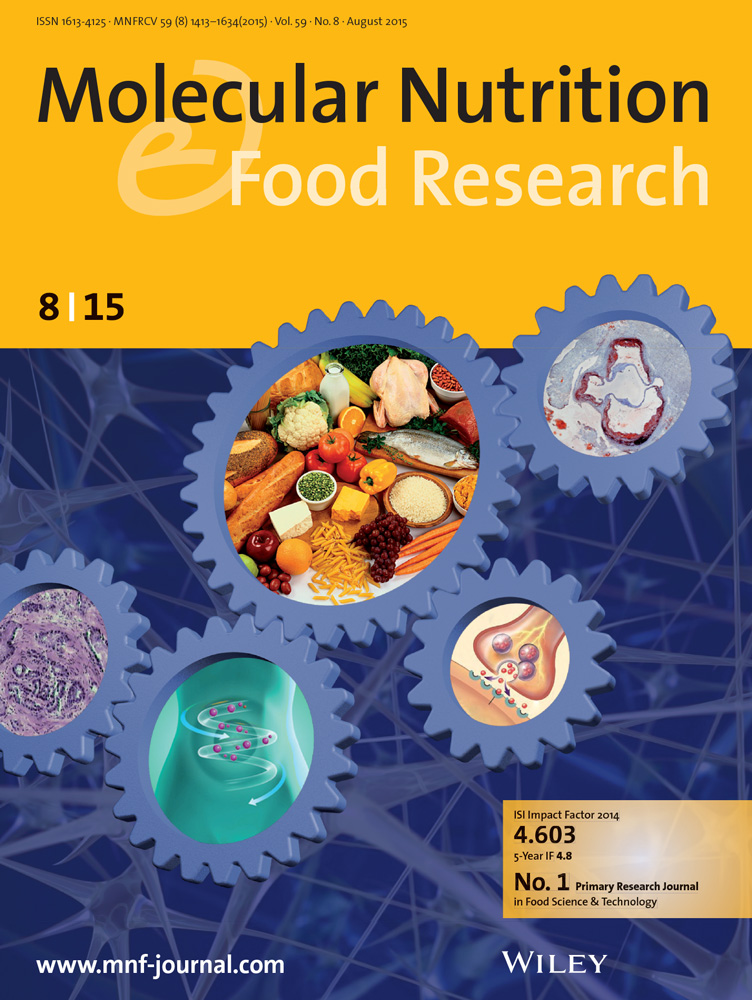Quinoa Polyphenols Alleviate Glucose Deprivation-Induced Endoplasmic Reticulum Stress by Enhancing Hepatic Cellular Autophagy and Antioxidant Capacity.
IF 4.2
2区 农林科学
Q1 FOOD SCIENCE & TECHNOLOGY
引用次数: 0
Abstract
Glucose deprivation induces ER stress, oxidative damage, and apoptosis, contributing to hepatic dysfunction. This study explores the protective effects and mechanisms of quinoa-derived polyphenols (QPs) under glucose-deprived conditions. HepG2 and Huh7 cells were exposed to QPs at 100 or 200 µg/mL for 12 or 24 h under glucose-deprived conditions, while male mice received QPs by gavage at 40 or 80 mg/kg/day for 14 days, followed by a single intraperitoneal injection of 2-deoxy-D-glucose (2-DG, 400 mg/kg) to induce ER stress. QPs significantly reduced ER stress markers (GRP78, p-IRE1, XBP1s), restored mitochondrial membrane potential, and attenuated apoptosis. QPs also activated the Nrf2/HO-1 antioxidant pathway and improved redox homeostasis. Additionally, QPs enhanced autophagic flux, as evidenced by increased LC3B2, ATG4B, and Beclin 1 and reduced SQSTM1. Pharmacological inhibition studies revealed that autophagy plays a critical role in the QP-mediated relief of ER stress. In vivo, QPs improved hepatic function and suppressed ER stress induced by 2-deoxyglucose. QPs protect hepatocytes from glucose deprivation-induced ER stress and apoptosis by enhancing antioxidant capacity and autophagy. These findings provide new insight into the dietary potential of quinoa polyphenols in preventing metabolic stress-related liver injury.藜麦多酚通过增强肝细胞自噬和抗氧化能力减轻葡萄糖剥夺诱导的内质网应激。
葡萄糖剥夺引起内质网应激、氧化损伤和细胞凋亡,导致肝功能障碍。本研究探讨了藜麦衍生的多酚(QPs)在葡萄糖剥夺条件下的保护作用和机制。HepG2和Huh7细胞在无糖条件下以100或200µg/mL剂量暴露于QPs 12或24 h,雄性小鼠以40或80 mg/kg/天剂量灌胃QPs,连续14天,然后单次腹腔注射2-脱氧-d -葡萄糖(2-DG, 400 mg/kg)诱导内质网应激。QPs显著降低内质网应激标志物(GRP78、p-IRE1、XBP1s),恢复线粒体膜电位,减缓细胞凋亡。QPs还激活Nrf2/HO-1抗氧化途径,改善氧化还原稳态。此外,QPs增强了自噬通量,LC3B2、ATG4B和Beclin 1增加,SQSTM1减少。药理抑制研究表明,自噬在qp介导的内质网应激缓解中起着关键作用。在体内,QPs可改善肝功能,抑制2-脱氧葡萄糖诱导的内质网应激。QPs通过增强抗氧化能力和自噬来保护肝细胞免受葡萄糖剥夺诱导的内质网应激和凋亡。这些发现为藜麦多酚在预防代谢应激相关肝损伤中的饮食潜力提供了新的见解。
本文章由计算机程序翻译,如有差异,请以英文原文为准。
求助全文
约1分钟内获得全文
求助全文
来源期刊

Molecular Nutrition & Food Research
工程技术-食品科技
CiteScore
8.70
自引率
1.90%
发文量
250
审稿时长
1.7 months
期刊介绍:
Molecular Nutrition & Food Research is a primary research journal devoted to health, safety and all aspects of molecular nutrition such as nutritional biochemistry, nutrigenomics and metabolomics aiming to link the information arising from related disciplines:
Bioactivity: Nutritional and medical effects of food constituents including bioavailability and kinetics.
Immunology: Understanding the interactions of food and the immune system.
Microbiology: Food spoilage, food pathogens, chemical and physical approaches of fermented foods and novel microbial processes.
Chemistry: Isolation and analysis of bioactive food ingredients while considering environmental aspects.
 求助内容:
求助内容: 应助结果提醒方式:
应助结果提醒方式:


